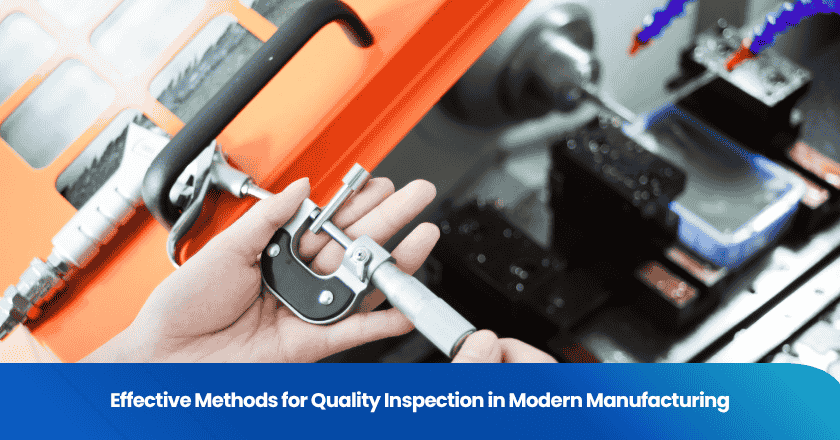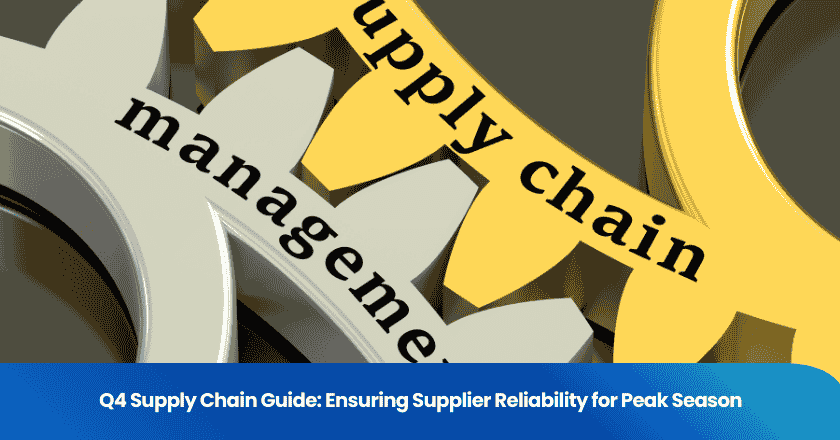
Quality inspection drives consistency and customer satisfaction in modern manufacturing. You can see the impact in these numbers: a one percent rise in defect rate costs up to $8 million for an automotive plant, while systematic inspection can improve customer satisfaction scores by 50%. By using various forms of inspection, you enhance accuracy, reduce human error, and detect defects early. Reflect on your current processes, and consider the benefits of updating them for 2025.
Preparation
Tools and Documentation
Thorough preparation sets the foundation for a successful inspection. You need to gather all necessary tools and review documentation before starting. This step ensures accuracy and supports fda inspection readiness. When you organize your resources, you minimize delays and avoid confusion during the inspection process.
Tip: Create a checklist for all required tools and documents. This simple step boosts inspection preparedness and helps you track progress.
You should connect related documents, such as batch records, SOPs, and product specifications. Mapping these relationships provides a clear story during inspections and demonstrates control. Tracking document lifecycles also shows your commitment to quality and fda inspection readiness.
Review product specifications and use organized checklists for efficiency. You should establish SOPs for incoming inspections to guide your team and reduce errors. Reliable tools ensure accurate measurements and support fda inspection readiness.
Team Readiness
Your team must be ready and confident before any inspection. Training plays a key role in fda inspection readiness. You should provide practical training that covers inspection techniques and tool usage. Operators need to demonstrate proficiency in realistic scenarios.
- Hold pre-inspection meetings to clarify roles and expectations.
- Review quality standards and objectives with your team.
- Encourage open communication to address questions or concerns.
Comprehensive training and clear communication help your team perform inspections effectively. When everyone understands their responsibilities, you achieve consistent results and maintain high standards.
Quality Standards
Setting Objectives
You set the foundation for effective inspection by establishing clear objectives. Quality standards guide your team and ensure consistency across every process. When you align objectives with your organization’s strategic goals, you create a direct path to improvement. Objectives must be specific, measurable, achievable, relevant, and time-bound. This approach helps you focus on measurable results and supports continuous improvement.
You can use these steps to set objectives for inspection:
1. Establish clear, measurable quality criteria and standards.
2. Inspect and test incoming raw materials to meet specifications.
3. Collect and test samples from production batches.
4. Perform continuous inspections during manufacturing.
5. Record defects and implement corrective actions.
6. Maintain detailed records for traceability and audits.
7. Conduct thorough end-of-line inspections of completed products.
8. Analyze QC data for continuous improvement opportunities.
Communication
Communication plays a vital role in maintaining quality standards. You must share objectives and expectations with your team to ensure everyone understands their responsibilities. Open channels allow you to address issues quickly and prevent misunderstandings. Regular meetings and feedback sessions help you reinforce standards and encourage engagement.
Tip: Use visual aids and checklists during team briefings. These tools clarify inspection steps and make objectives easy to follow.
You should reference widely recognized standards to support your inspection process.
The following table highlights some of the most important standards in modern manufacturing:
| Standard | Description |
|---|---|
| ISO 9001 | Outlines best practices for quality management systems, crucial for inspection processes. |
| ISO 14001 | Focuses on effective environmental management systems, relevant for sustainable manufacturing practices. |
| ISO 45001 | Pertains to occupational health and safety management, ensuring safe working conditions in manufacturing. |
Quality standards provide benchmarks for your inspection activities. They emphasize documentation, process evaluation, and continuous improvement. When you communicate these standards clearly, you build a culture of accountability and excellence.
Product Specs
Technical Details
You need to understand the technical details of your products to perform accurate quality inspection. Each product has unique specifications that guide your assessment. When you focus on the right technical aspects, you improve consistency and reduce errors.
The following table outlines the most critical details you should consider:
| Critical Technical Details for Quality Inspection | Description |
|---|---|
| Types of Inspections | Visual inspections help you detect cosmetic or structural issues. |
| Importance of Documentation | Capturing detailed notes and standardized reporting ensures clarity. |
| Categorization of Defects | You categorize defects as minor, major, or critical, which impacts your quality control strategy. |
| Use of Inspection Software | Software streamlines your process, captures data, and generates reports efficiently. |
You should review these details before starting any inspection. When you document findings and categorize defects, you create a clear record for future reference. Inspection software helps you manage large volumes of data and supports decision-making.
Training
Your team must understand product specifications to inspect effectively. Training ensures that everyone knows what to look for and how to report findings. Ian White, a former MHRA inspector, highlights the importance of preparation:
"It is important to foster a culture of preparation and ensure that SMEs have the necessary knowledge and support to represent your organization effectively during an inspection."
You can build a strong inspection team by focusing on these training practices:
- Provide comprehensive training for all relevant staff.
- Ensure team members understand the assessment process.
- Teach the criteria that evaluators will consider.
- Encourage ongoing learning and support.
When you invest in training, you empower your team to identify issues quickly and maintain high standards. Preparation and knowledge lead to better inspection outcomes and support continuous improvement.
Forms of Inspection
You encounter several forms of inspection in modern manufacturing, each with unique strengths and applications. Understanding these forms of inspection helps you select the right approach for your process and ensures consistent quality.
| Inspection Method | Description | Effectiveness |
|---|---|---|
| Visual Inspection | Examines items with the naked eye or magnifying tools. | Limited by human error, with defect detection rates varying between 60% and 90%. |
| Dimensional Inspection | Measures items to ensure they meet specified dimensions. | Time-consuming and requires skilled operators for precision. |
| Non-Destructive Testing (NDT) | Assesses materials without causing damage. | Valuable for detecting subsurface defects that visual inspections might miss. |
| Destructive Testing | Tests a sample to its breaking point. | Provides data on material limits but results in the loss of tested samples. |
| Functional Testing | Tests products under operational conditions. | Ensures that the item meets necessary functionality and performance criteria. |
| First Article Inspection (FAI) | Comprehensive examination of the first item produced. | Helps identify and rectify issues early, ensuring subsequent products conform to standards. |
Visual Inspection
Visual inspection remains one of the most common forms of inspection. You use it to spot surface defects like cracks or scratches. In luxury automotive manufacturing, about 70% of faulty components are detected and rejected through visual inspection. The food and beverage industry also relies on this method to ensure product safety and quality. Many companies now use machine vision systems to enhance accuracy. Visual inspection is non-destructive and quick, but human error can limit its effectiveness. You can improve results by combining visual inspection with mock inspections, which train your team to recognize subtle defects.
Tip: Regular mock inspections sharpen your team's attention to detail and help maintain high standards.
Functional Testing
Functional testing is another essential form of inspection. You test products under real-world conditions to confirm they meet performance requirements. This approach ensures you deliver items that satisfy customer expectations. Functional testing supports quality assurance by preventing defects, maintaining consistency, and optimizing efficiency. You can use mock inspections to simulate operational scenarios and prepare your team for actual testing environments.
- Use mock inspections to practice functional testing steps.
- Review results to identify areas for improvement.
- Encourage your team to share feedback after each mock inspection.
Automated Methods
Automated methods represent the most advanced forms of inspection. You can implement machine vision systems and AI-driven tools to analyze product characteristics and detect errors. These systems achieve over 99% defect detection accuracy and require only 20–40 images per defect class for effective assessments. For example, AI inspection technologies have increased production efficiency by 30% in some cases. Automated forms of inspection reduce human error and speed up the process. You can use mock inspections to validate automated systems and ensure they perform as expected.
By combining different forms of inspection and conducting frequent mock inspections, you build a robust quality control system that adapts to modern manufacturing challenges.
Quality Control Inspection
Inspection Steps
You achieve consistent results when you follow a structured approach to quality control inspection. Each step in the quality control process builds on the previous one, ensuring you catch defects early and maintain high standards. Here is a typical sequence you can use to guide your team:
1. Define Standards
Set detailed quality standards for each product or product line. These standards form the foundation of your quality control process.
2. Know the Specifications
Establish clear product specifications, including measurements and tolerances. This clarity helps you identify deviations quickly.
3. Establish Numbers
Decide how many products will undergo quality control inspection. This step ensures you have a representative sample for analysis.
4. Testing Methodology
Define the specific methodology for inspecting products. Choose the right tools and techniques for your quality control process.
5. Report Defects
Create a process for reporting defects and classifying their seriousness. Accurate reporting supports corrective actions and continuous improvement.
6. Communicate System
Ensure effective communication channels for reporting findings. Open communication keeps your team aligned and responsive.
Tip: Document each step in your quality control process. This habit supports traceability and helps you refine your approach over time.
You strengthen your quality control inspection by following these steps. Each action supports a systematic approach, making it easier to identify trends and prevent recurring issues.
Sample Size
Determining the right sample size is a critical part of the quality control inspection. You want to balance efficiency with reliability, ensuring your quality control process delivers accurate results without unnecessary waste. Manufacturers often use Acceptable Quality Limit (AQL) standards to set sample sizes. These standards help you decide how many units to inspect from each batch.
- General Inspection Levels determine the overall sample size for most products.
- Special Levels (S-1, S-2, S-3, S-4) allow you to use smaller sample sizes for specific items. These levels work well for destructive tests, expensive items, or when results are consistent across samples.
You can choose from several statistical sampling methods to analyze sample size effectiveness. The table below summarizes the most common approaches:
| Sampling Plan Type | Description | Key Features |
|---|---|---|
| Single Sampling Plan | Take one sample from the lot and compare defects. | Efficient for moderate costs. |
| Double Sampling Plan | Use a second sample if the first is inconclusive. | Reduces total inspections needed. |
| Multiple Sampling Plan | Extend to several rounds for decision-making. | Allows fine-tuned quality decisions. |
| Sequential Sampling | Assess units one by one for quick decisions. | Minimizes sample sizes; needs real-time data. |
| Skip-Lot Sampling | Skip lots when suppliers meet standards consistently. | Efficient for long-term vendors. |
| Continuous Sampling | Inspect items at intervals, not in defined lots. | Common in assembly lines. |
| Military Standards | Use ready-made plans for various lot sizes. | Influential in mission-critical industries. |
- Statistical sampling methods help you calculate the minimum number of samples required for testing.
- These methods ensure your quality control process meets standards with minimal testing.
- Acceptance sampling lets you select random samples to assess if the entire lot meets quality requirements.
"Manufacturing quality control relies on specific conditions of the central limit theorem to ensure reliable statistical analysis. Larger samples provide more reliable results, typically requiring 30 or more measurements for optimal outcomes."
You improve your quality control inspection by selecting the right sample size and method. This approach ensures your quality control process remains efficient and effective, supporting your commitment to excellence.
Documentation
Record Keeping
Accurate documentation forms the backbone of your quality system. You need to record every inspection result and process detail to maintain traceability and accountability. Digital record-keeping systems offer significant advantages. You store, access, and share records with ease. Search functions allow you to retrieve past inspection data quickly. You can link records to specific assets or locations, streamlining asset history monitoring. Digital inspection checklists reduce human error and ensure you cover all necessary points. Updates reflect regulatory changes instantly across your enterprise. Time stamps and digital signatures enhance document authenticity. You minimize the risk of lost or misplaced documents. Tagging documents to locations within a 3D model enables quick retrieval in complex facilities.
Tip: Use digital platforms to centralize your quality system documentation. This approach saves time and improves accuracy.
Reporting Defects
Effective defect reporting strengthens your quality system and supports continuous improvement. You must classify and document defects as soon as you identify them during inspection. Modern methods such as optical inspection, electron beam inspection, and laser scanning provide detailed analysis for surface and fine defects. Non-destructive testing techniques like ultrasonic and X-ray imaging help you find internal flaws without damaging products. Computer vision and deep learning technologies enable real-time defect identification and classification, improving accuracy and speed.
You should standardize defect classification within your quality system. Assign categories such as minor, major, or critical. This practice helps you prioritize corrective actions and monitor trends over time. Consistent documentation and reporting ensure your quality system remains robust and responsive to change.
Decision-Making
Pass/Fail Criteria
You need clear pass/fail criteria to make effective decisions during inspection. These criteria define the specific parameters a product must meet to pass. You should ensure each criterion is measurable, objective, and relevant to the product’s function. Involving quality control experts helps you reach consensus and maintain consistency.
- Define measurable parameters for each product.
- Use checklists with specific measurement requirements.
- Replace vague checks with clear instructions, such as “check for visible cracks.”
Good checklists help you avoid missing critical steps, especially during busy periods. You eliminate guesswork by including precise pass/fail requirements. When you set objective standards, you reduce disputes and improve reliability.
Tip: Involve your team in setting criteria. Collaboration ensures everyone understands what “pass” and “fail” mean for each product.
Handling Nonconformance
You must address nonconformance quickly to maintain quality. Building a culture of quality encourages employees to report deviations and work together to find solutions. Swift action prevents problems from escalating and protects your reputation.
1. Build a culture of quality. Train your team to report deviations and collaborate on solutions.
2. Act quickly and document every incident. Trace each issue for accountability.
3. Conduct root cause analysis. Identify the underlying reasons for nonconformance.
4. Automate corrective and preventive actions. Use workflows to minimize human error and ensure efficient execution.
You should record every deviation from expected standards. Investigate the root cause using structured methods. Implement corrective actions to eliminate the issue. Monitor results to verify effectiveness.
Note: Consistent handling of nonconformance supports continuous improvement and strengthens your quality system.
Feedback Loop
Communication Channels
You need strong communication channels to support a robust feedback loop in manufacturing. Open lines of communication help your team share insights and address issues quickly. Regular meetings, digital dashboards, and automated feedback tools keep everyone informed and engaged. When you foster regular communication, you create an environment where feedback is timely and actionable.
- Hold daily or weekly team meetings to discuss inspection results and challenges.
- Use automated feedback tools to collect and distribute information in real time.
- Encourage team members to report problems and suggest improvements.
Tip: Ongoing feedback loops, rather than one-off reviews, create a dynamic environment where you can continuously refine your processes.
Ongoing monitoring of quality assurance processes allows you to adapt to evolving standards and customer needs. You build trust and accountability when everyone knows their voice matters.
Continuous Improvement
Continuous improvement strategies drive better outcomes in manufacturing. You collect data on product quality and performance, then use this information to refine your processes. By analyzing customer and operational feedback, you can spot trends, address recurring issues, and make necessary adjustments.
You can follow a simple improvement cycle:
1. Define the problem and set clear goals.
2. Measure current performance with reliable data.
3. Analyze the root causes of issues.
4. Improve by implementing targeted solutions.
5. Control the process to sustain gains and train your team.
Install statistical process control to identify and address issues during production. Conduct regular audits to ensure your quality control system remains effective. When you encourage problem reporting and reward employees who meet quality goals, you create a culture focused on excellence. A strong feedback loop ensures your inspection process evolves and supports continuous improvement.
A systematic, step-by-step approach to inspection balances thoroughness, speed, and cost, leading to reliable quality check outcomes. Studies show that updated processes reduce defects, boost customer satisfaction, and lower costs. In 2025, AI-driven automation will further enhance accuracy and efficiency.
Now is the time to assess your inspection process and invest in continuous improvement for lasting success.
FAQ
What is the main goal of quality inspection in manufacturing?
You aim to ensure every product meets defined standards. This process helps you reduce defects, improve customer satisfaction, and support continuous improvement within your operation.
How often should you update your inspection procedures?
You should review and update your inspection procedures at least once a year. Regular updates help you keep pace with new regulations, technologies, and customer expectations.
Why is documentation important during inspections?
You need accurate documentation to track inspection results, support audits, and identify trends. Good records help you make informed decisions and maintain accountability throughout your quality management system.
What tools can help you improve inspection accuracy?
You can use digital checklists, automated inspection systems, and data analysis software. These tools help you reduce errors, speed up inspections, and ensure consistent results.
How do you handle nonconforming products?
You should separate nonconforming products immediately. Investigate the root cause, document the issue, and implement corrective actions. This approach prevents similar problems in future production.
Grow your business with TradeAider Service
Click the button below to directly enter the TradeAider Service System. The simple steps from booking and payment to receiving reports are easy to operate.



